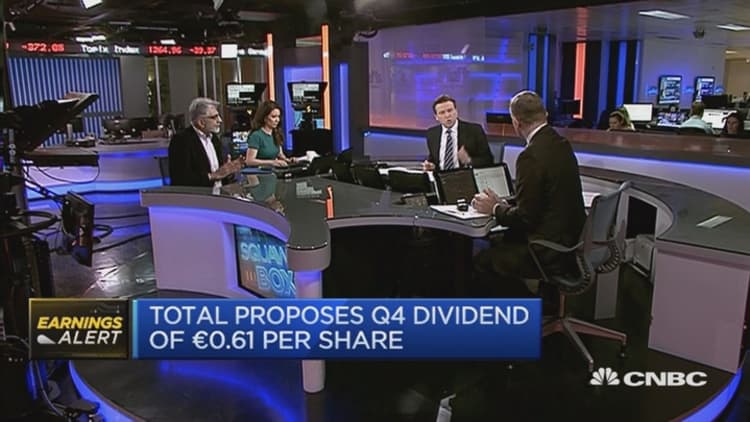


Oil futures rebounded Thursday afternoon after The Wall Street Journal reported OPEC members might be ready to cooperate on a cut, citing comments UAE Energy Minister Suhail bin Mohammed al-Mazrouei gave to Sky News Arabia.
U.S. West Texas Intermediate (WTI) last traded at $27.20 a barrel. Earlier in the day, it settled down $1.24, or 4.5 percent, at $26.21 a barrel, after breaking a psychologically key level of $26.19, the lowest since May 8, 2003, when it hit $26.
Brent crude futures were up 17 cents at $31.01 per barrel, having traded between $30.01 and $31.14.
Suhail bin Mohammed al-Mazrouei also said low prices were already forcing non-OPEC members to cap production, but that cuts would require total cooperation from everyone, according to Sky News Arabia's reporting. U.S. stocks bounced sharply after the report.
Prior to the report, U.S. oil prices had fallen for a sixth straight day on Thursday, hitting the lowest since May 2003, weighed by brimming crude inventories and a Goldman Sachs forecast that prices would remain low and volatile until the second half of the year.
Market intelligence firm Genscape reported the Cushing, Oklahoma delivery hub for U.S, crude futures saw a build of almost 425,000 barrels in the week to Feb. 9.
Crude inventories in Cushing hit all-time highs just shy of 65 million barrels during the week ended Feb. 5, government data showed on Wednesday.
Traders scrambled to buy bearish U.S. crude options, particularly for $25 puts, on the back of the continuous price slide. Technical analysts said the $25 level could be hit in a matter of days.
The spread between the first two months in U.S. crude widened nearly 60 cents to as much as $2.80. That was the largest discount, or "contango," between the two contracts since November, indicating tight storage space was limiting interest to buy prompt barrels to store and sell at a later date.
"If storage becomes any scarcer, producers will have no choice but to sell it (the front-month) even lower," said Pete Donovan, broker at New York's Liquidity Energy.
Investment bank Goldman Sachs said in a note to its clients it expected oil prices to fluctuate between $20 a barrel, at the operational stress level, and $40, at the financial stress level, with significant volatility and no trend until the second half.
Oil has fallen almost 75 percent since mid-2014 as competing producers pumped 1-2 million barrels of crude daily exceeding demand, just as China's economy hit lowest growth in a generation.
Brent gained briefly after a report cited by sources that some OPEC countries were trying to achieve a consensus among the group and key non-members for an oil production "freeze".
Despite that, fighting among OPEC members for market share appeared to heighten as Iran offered its crude to Asia at a discount to rival OPEC producer Saudi Arabia.
"There's a price fight within OPEC for Asian market share, and there are worries that storage capacity is going to be breached," said Bjarne Schieldrop, chief commodity analyst at SEB in Oslo.


